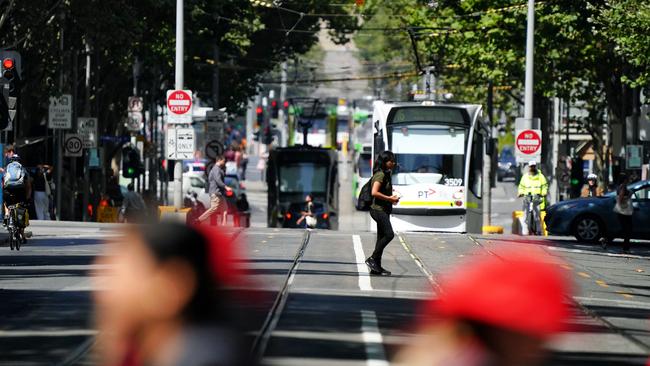Inflation could be back below 3pc by July thanks to power subsidies
Billions of dollars worth of energy rebates will leave household electricity prices 30 per cent lower and push inflation down, but will still not be enough to trigger an early interest rate cut, economists say.

Billions of dollars worth of energy rebates will leave household electricity prices 30 per cent lower and push inflation back within the Reserve Bank’s 2-3 per cent target range as soon as July, but economists say that would still not be enough to trigger an early interest rate cut.
With Labor’s cost of living measures in the May budget also designed to lower measured consumer prices and place pressure on the RBA to deliver mortgage relief ahead of the next election, the Albanese government is likely to jump on the forecast decline in price growth as evidence that its policies are making a meaningful difference in the fight to bring inflation back under control.
Ahead of a parliamentary sitting week where the economy is again likely to be a focus, Jim Chalmers in a statement on Monday said “we are making welcome and encouraging progress in the fight against inflation, but we know there is more work to do because inflation is still too high and people are under pressure”.
“That’s why this month’s budget had such a big focus on providing responsible cost-of-living relief that directly reduces inflation,” the Treasurer said.
CBA economist Stephen Wu calculated that extra energy subsidies announced in recent federal and state budgets would at their peak in July and August leave household power bills nearly 30 per cent lower than would otherwise be the case. That would slash as much as 0.6 percentage points from measured consumer price growth in those months, Mr Wu estimated, and Australians on average would still be paying 15 per cent less for electricity by the middle of next year.
Monthly inflation figures on Wednesday are expected to show price growth in the year to April steady at 3.5 per cent, suggesting the impact of the new subsidies would be enough to drive annual price growth below 3 per cent early in the new financial year.
In contrast, the RBA does not expect inflation on a quarterly basis to be back within its target range until late 2025, and at its meeting earlier this month considered the case for a rate hike.
CBA senior economist Belinda Allen said a sharp but temporary drop in inflation as a result of government intervention would not trigger an immediate response from the RBA board, which would focus on underlying inflationary pressures, particularly in areas such as services where price growth is proving worryingly sticky.
The RBA prefers the more fulsome quarterly CPI figures, as monthly reports only offer a partial picture of price movements.
Even on this measure – which in the year to March was running at 3.6 per cent – Ms Allen said inflation could also conceivably be back at 3 per cent or below in the September quarter, or three months earlier than flagged in this month’s federal budget.
The May federal budget included an extra $3.5bn in 2024-25 to provide $300 rebates to Australian households.
Queensland Premier Steven Miles, facing a difficult election in October, has committed to using taxpayer money to provide $1000 in power bill relief in the second half of this year, while the Labor government of fellow resource-rich state Western Australia has committed to a $400 energy rebate for its residents.
The CBA analysis suggested rebates would drive a 20 per cent reduction in household family bills over the three months to September, which would take half a percentage point off quarterly inflation.
Despite the RBA’s determination to abstract from the noise of the impact of subsidies on consumer prices, Ms Allen said by November the central bank should have enough evidence of a slowing economy and inflation to deliver its first rate cut.
Retail trade figures for April will be released on Tuesday and are anticipated to show only the weakest of rebounds following a sharp contraction in March, according to consensus forecasts, confirming that Australian consumers remain under intense pressure.






To join the conversation, please log in. Don't have an account? Register
Join the conversation, you are commenting as Logout